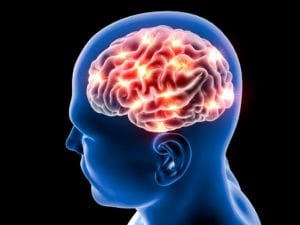Written by Taylor Woosley, Staff Writer. Post-test findings of a 4-week conventional stroke physical therapy program combined with backward treadmill walking significantly improved results of the Berg Balance test (p = 0.008), the Timed Up and Go test (p = 0.008), the timed 10-Meter Walk Test (p = 0.016) and forced expiratory volume in one second (p = 0.016) compared to pre-test scores.
 Stroke is the second-most cause of mortality and the third leading cause of disability globally1. Due to recent medical management improvements, there are an increased number of stroke survivors and an increase in the burden of disability2. Strokes can lead to sensory, visual, cognitive, and motor impairments, which include loss of balance and gait3.
Stroke is the second-most cause of mortality and the third leading cause of disability globally1. Due to recent medical management improvements, there are an increased number of stroke survivors and an increase in the burden of disability2. Strokes can lead to sensory, visual, cognitive, and motor impairments, which include loss of balance and gait3.
Physical training is considered an effective rehabilitation strategy that may improve motor function recovery by promoting neuroplasticity4. The backward training approach activates key stability muscles such as the trunk, hip, and knee muscles to a greater extent than forward training5. Research has shown that backward walking training alleviates the maladaptive flexor-synergy gait pattern associated with central nervous system injury6.
Chang et al. conducted a single-blind, randomized controlled trial to investigate the effect of walking backward on a treadmill on speed of walking, balance, and cardiopulmonary fitness for participants with chronic stroke. Subject inclusion consisted of patients experiencing onset of stroke 6 months or longer prior to study enrollment, first cerebrovascular accident history, with hemiplegia causing problems with unilateral limb movement or sensory defects, with a Brunnstrom motor stage of lower extremity equal to or greater than IV, who are medically stable and could walk at least 11 m with or without assistance.
16 chronic stroke participants were randomly assigned to either the experimental group or the control. The control group underwent a 4-week conventional stroke physical therapy program 3 times per week for 30 minutes each. The experimental group combined the conventional program with a regime of backward treadmill walking. Information pertaining to demographic characteristics, stroke type, side of hemiplegia, height, weight, time of onset and duration of stroke were obtained from subjects. Muscular tension in the unilateral upper and lower limbs with hemiplegia was measured using the Modified Ashworth Scale (MAS). The Functional Ambulation Category (FAC) was utilized to assess the ability to walk unaided.
Primary outcome measures were the Berg Balance Scale (BBS), a Timed Up and Go test (TUG), a 6-Minute Walk Test (6MWT), a 10-Meter Walk Test (10MWT), and a pulmonary function test (PFT) to determine the forced vital capacity (FVC) and forced expiratory volume in one second (FEV1). All subjects completed the evaluation pre- and post-intervention. Differences between the two groups was compared using a Mann-Whitney U test for continuous data and a chi-square test for non-continuous data. Significant findings of the study are as follows:
- The backward treadmill walking group had significant improvements of the pre- and post-test scores for the Berg Balance Scale (BBS) (p = 0.008), the TUG (p = 0.008), the 10MWT (p = 0.016), the 6MWT (p = 0.016), FVC (p = 0.023) and FEV1 (p = 0.016).
- A significant difference between groups in terms of the BBS was noted (p = 0.000), with the backward treadmill walking group experiencing a greater mean change scale compared to the control. Additionally, for the 10MWT, the mean change in speed increased for the experimental group and decreased in the control, with significant differences between groups (p = 0.003).
- A significant difference between groups was observed for the FEV1 (p = 0.028).
Results of the study show that a 4-week conventional stroke physical therapy combined with backward treadmill walking for 30 minutes significantly improved performance of BBS, TUG, 10MWT, and FEV1. Continued research using larger sample sizes and increased training intensity are necessary to better comprehend the potential cardiopulmonary benefits of backward treadmill walking.
Source: Chang, Ken-Wei, Chih-Ming Lin, Chen-Wen Yen, Chia-Chi Yang, Toshiaki Tanaka, and Lan-Yuen Guo. “The effect of walking backward on a treadmill on balance, speed of walking and cardiopulmonary fitness for patients with chronic stroke: a pilot study.” International Journal of Environmental Research and Public Health 18, no. 5 (2021): 2376.
© 2021 by the authors. Licensee MDPI, Basel, Switzerland. This article is an open access article distributed under the terms and conditions of the Creative Commons Attribution (CC BY) license (https://creativecommons.org/licenses/by/4.0/).
Click here to read the full text study.
Posted January 4, 2024.
Taylor Woosley studied biology at Purdue University before becoming a 2016 graduate of Columbia College Chicago with a major in Writing. She currently resides in Glen Ellyn, IL.
References:
- Hadanny A, Rittblat M, Bitterman M, et al. Hyperbaric oxygen therapy improves neurocognitive functions of post-stroke patients – a retrospective analysis. Restor Neurol Neurosci. 2020;38(1):93-107. doi:10.3233/rnn-190959
- Haslam BS, Butler DS, Kim AS, Carey LM. Somatosensory Impairment and Chronic Pain Following Stroke: An Observational Study. Int J Environ Res Public Health. Jan 4 2023;20(2)doi:10.3390/ijerph20020906
- Lee HS, Park YJ, Park SW. The Effects of Virtual Reality Training on Function in Chronic Stroke Patients: A Systematic Review and Meta-Analysis. Biomed Res Int. 2019;2019:7595639. doi:10.1155/2019/7595639
- Moon Y, Bae Y. The effect of backward walking observational training on gait parameters and balance in chronic stroke: randomized controlled study. Eur J Phys Rehabil Med. Feb 2022;58(1):9-15. doi:10.23736/s1973-9087.21.06869-6
- Awosika OO, Chan D, Sucharew HJ, et al. Backward Locomotor Treadmill Training Differentially Improves Walking Performance across Stroke Walking Impairment Levels. Brain sciences. Jan 19 2022;12(2)doi:10.3390/brainsci12020133
- Awosika OO, Chan D, Rizik BA, et al. Serial Backward Locomotor Treadmill Training Improves Bidirectional Walking Performance in Chronic Stroke. Front Neurol. 2022;13:800757. doi:10.3389/fneur.2022.800757
